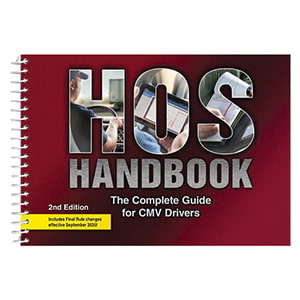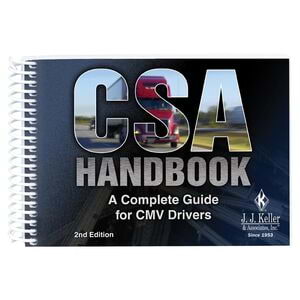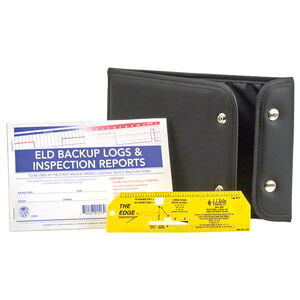Hours of Service Training: Exceptions Online Training Course - Spanish
Helps drivers understand which hours-of-service exceptions can be used and when to use them.
Product Code:61331Make your job easier with a subscription to J. J. Keller's® Training. Get started today with a free eLearning Course!
Try for Free! (opens a new window)
The U.S. Department of Transportation's Federal Motor Carrier Safety Administration (FMCSA) has issued four significant Hours of Service (HOS) rule changes for interstate drivers – effective September 29, 2020.
The four new rule changes will improve safety, increase productivity, and increase flexibility for truck drivers:
- 30-minute breaks (§395.3(a)(3)) - Drivers can remain "on duty" for their breaks and not have to take a break until completing eight hours of driving time, rather than consecutive time.
- 100 air-mile exception (§395.1(e)(1)) - Drivers must be done working within 14 consecutive hours. Drivers must remain within a 150 air-mile radius.
- Split-sleeper provision (§395.1(g)(1)) - Drivers must spend at least 7 hours in a sleeper berth, plus another break to reach 10 hours total. Neither rest period counts against the 14-hour limit.
- Adverse conditions (§395.1(b)(1)) - Drivers may extend both their driving and on-duty limits by 2 hours.
With hours-of-service it's very important to know what exceptions you can use and how to use them. If a driver can't explain an exception, they may end up with a violation because it will look like a rule is being broken. Using exceptions properly and calling them out correctly will result in fewer violations.
There are seven commonly used hours-of-service exceptions included in this training:
- Air-mile radius short-haul
- 16-hour ("big day")
- Split-sleeper berth
- Adverse driving conditions
- Electronic logging devices (ELDs)
- Agricultural operations
- Personal conveyance
Carriers may allow or prohibit the use of exceptions based on their policies and practices.
The Hours of Service Training: Exceptions course is designed to help drivers understand which exceptions can be used and when to use them.
- The eLearning course covers the following topics:
- Air-Mile Radius Short-Haul
- 16-Hour ("big day")
- Split-Sleeper Berth
- Adverse Driving Conditions
- Electronic Logging Devices (ELDs)
- Agricultural Operations
- Personal Conveyance
- Other Exceptions
- After completing this course, drivers will be able to:
- Identify which drivers can use an hours-of-service exception
- Describe what an exception relieves a driver from
- Note: Spanish course will be available November 2020
- Intended Audience: Property-Carrying CMV Drivers
- Regs Covered: 49 CFR Part 395
- Length: 35 minutes
- Languages: English (61330), Spanish (61331)
- Copyright Date: 2020
Interested in using J. J. Keller content on your own Learning Management System or company intranet?
Access J. J. Keller’s award-winning training content on your LMS or intranet with flexible licensing options. Choose from single courses, full curricula, or our entire library, all available in multiple formats to meet your specific needs. Tailor your selection to suit your operation! View options available with our custom safety and compliance solutions.
J. J. Keller® Training
All our interactive online courses feature:
- Easy purchasing and planning for the training you need
- 24/7 access to all our interactive online and streamlining video programs
- Hundreds of titles to choose from
- Free recordkeeping tool to track and report on all training activity
For more information on training subscriptions, please call us at 1-888-601-2018 or visit the J. J. Keller® Training website to access your account or find additional details.
Compliance Topic: CSA Scores, DOT and Driver Training, Hours of Service
Industry: Transportation
Language: English











